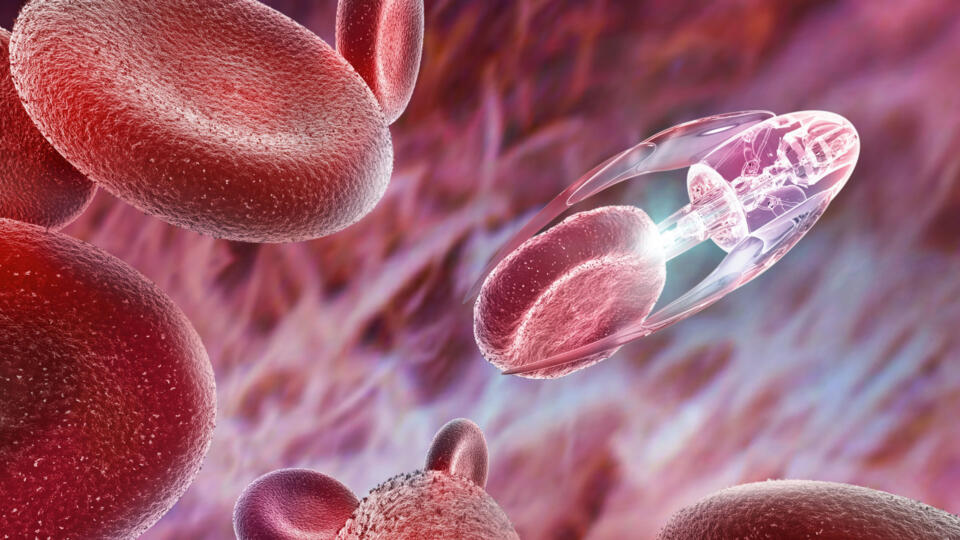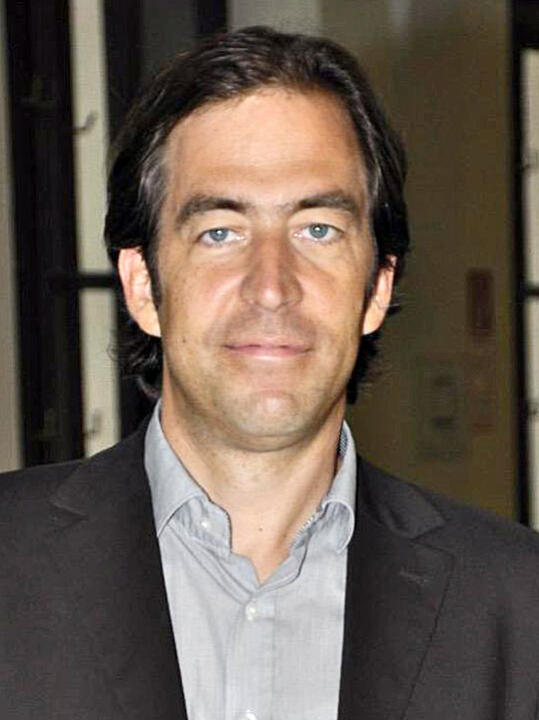
Midgets with potential
Submarines, robots, windmills, cars, elevators and motors – as a non-expert you need a certain amount of imagination to detect the various and sundry things that scientists in the discipline of molecular nanotechnology see in the tiny molecules under a scanning tunneling microscope. In the future, for example, such artificial nanomachines are supposed to navigate through the bloodstream, diagnose diseases and deliver drugs directly to the place where they’re needed. They could track down environmental toxins and directly neutralize them or put together chemicals just like their big robotic cousins assemble cars on a production line. In spite of such prospects, the imagination of the scientists who are building the first nanomachines today probably describes only a fraction of the possibilities resulting from this comparatively young field of research.
At the level of electric motors in 1830
“I also believe that there’ll be a lot more to come,” says Leonhard Grill, who leads the “Single-Molecule Chemistry” working group at the Institute of Chemistry at Karl Franzens University of Graz, Austria. “But until then, there are so many steps still to be made that today we can’t estimate what exactly it’s going to be. We’re just at the beginning.” The Nobel Prize Committee that awarded the Nobel Prize in chemistry last year to the three scientists Jean-Pierre Sauvage, James Fraser Stoddart and Bernard Lucas Feringa for the development of the fundamentals to build nanomachines compares the current state of their development roughly with that of electric motors in 1830. At that time, the motors were able to spin the first wheels or cranks, but not much more than that. Nobody back then had any inkling of how revolutionary this technology was to become

We’re just at the beginnin
Leonhard Grill,
Leading expert at the University of Graz,
about the current state of nanotechnolog
The work of the nanomachine pioneers had similarly rudimentary beginnings. In the early eighties, the Frenchman Jean-Pierre Sauvage finds a way to link ring-shaped molecules together to form a chain. With that, the chemist from the University of Strasbourg creates the first possibility to transfer mechanical forces from one movable nanocomponent to another. The Scot Sir J. Fraser Stoddard, today a research scientist at Northwestern University in Evanston near Chicago, in the early nineties manages to thread a molecular ring onto a thin molecular axle and demonstrates that the ring is able to move along the axle. And the third scientist in the Nobel Prize trio, Bernard Feringa, a chemist at the University of Groningen, crowns this young field of research shortly before the turn of the millennium with the first molecular motor. Its molecular rotor blade continuously spins in the same direction when exposed to irradiation with light.
Nano race track as an incubator
The Dutchman is also the scientist to create the first nanocar in 2011. The molecular construct including the chassis and wheels has a size of two nanometers (i.e. two millionths of a millimeter or 0.0000000787 inches) and is driven by pulses of current from an electron microscope. The chemist and his team thus prove that it’s possible to use modules of atoms and molecules to design machines that function in similar ways as those in the macroscopic world. The work of Leonhard Grill, among other things, includes such nanocars as well. Together with American professor James Tour from Rice University in Houston the scientist from Graz wins the world’s first nanocar race at the end of April 2017 in which, similar to Feringa’s race cars, the molecular vehicles have to be moved along a specified track by electrical impulses from a scanning tunneling microscope.

“The nanocar race was more of a PR gimmick – albeit one that was great fun, not least because we won,” says Grill. Essentially, the object of such races is to learn more about the interaction between the surface and the molecule, in other words to optimize the nanocar’s grip, in a manner of speaking. Grill and Tour have since developed an even more flexible light drive for a nanomachine. This “fuel,” says Grill, offers several advantages: “With it we can remotely activate the machines and also move an extremely large number of molecules at the same time – in the future, possibly for systematic transportation of atoms or molecules.”
Nanomachines attacking malignancies in the body
This is a feat scientist X. Chris Le from the University of Alberta has just achieved for a special case. He attached artificial enzymes to a nanoparticle of gold in order to channel them into a cancer cell. The pathogenic cell produces a chemical substance which in turn activates a switch that has been incorporated in the artificial enzymes. Subsequently, the artificial enzymes begin to split certain molecules. At the moment, this is still only a principle, but it shows the direction of this research, as in the future it might be possible to activate drugs inside pathogenic cells.
James Tour is working on a version that uses an even more forceful approach when healing the cell is not the object. His latest molecular motor starts rotating at incredible speed under UV light. The more than two million revolutions per second suffice to drill through cell walls. The plasma will run out of the cell through the hole and cause the cell to die. In tests, Tour’s nanodrills have destroyed prostate cancer cells within the period of three minutes. However, at the moment, the method only works in in vitro experiments. Particularly the question of how future nanodrills and other molecular machines can be systematically steered to where they’re needed is one of those yet to be answered. As UV light is absorbed by the human skin it’s not of much use inside the body.
That’s why Nobel Prize winner Feringa is starting to get impatient. He feels that his colleagues should now intensify their efforts of thinking about how the nanomachines known today can be put to use – so that imagination will actually turn into reality.



